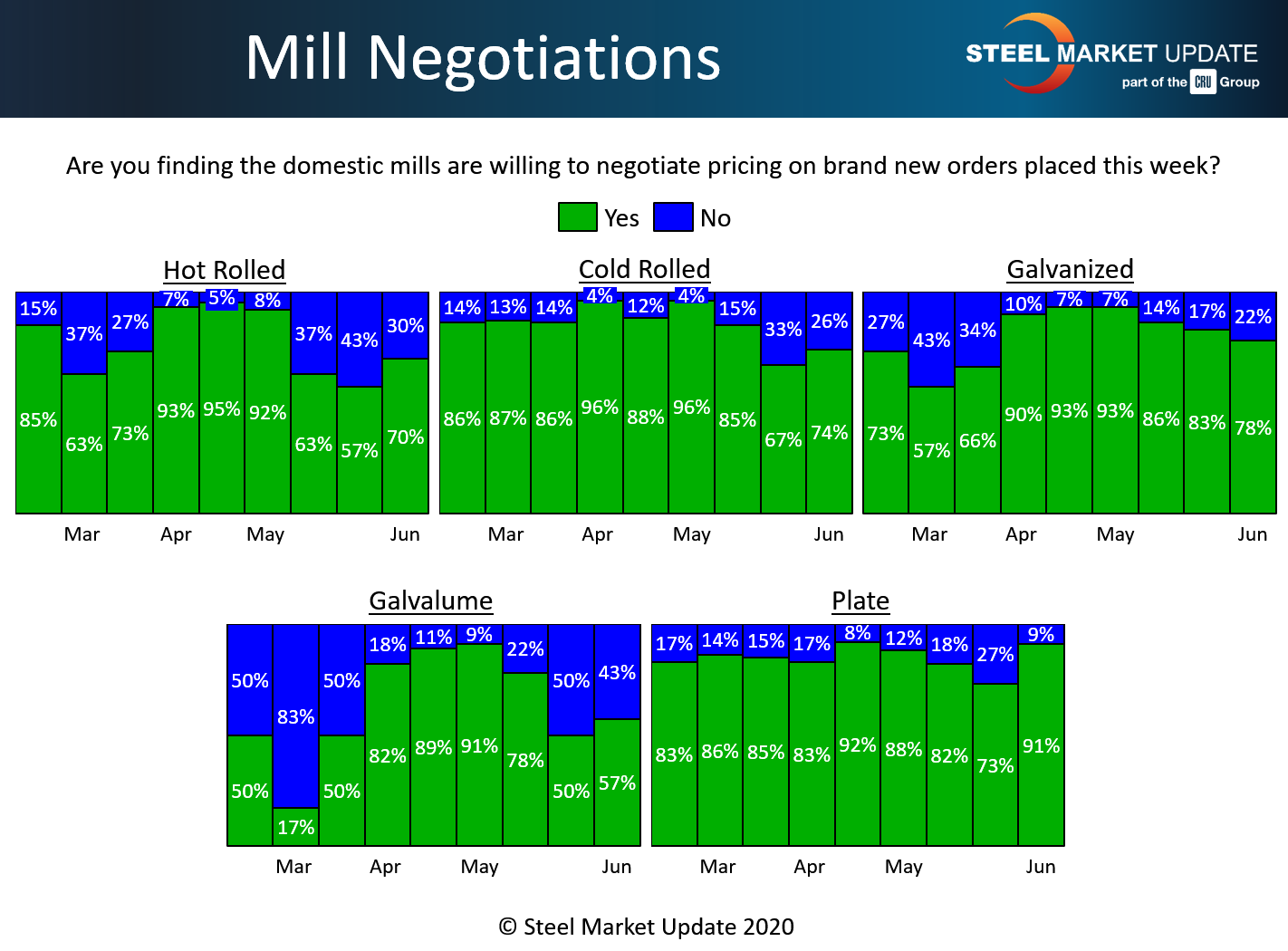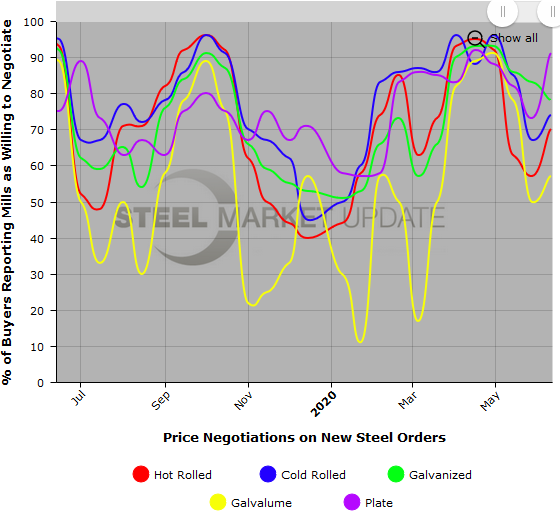SMU Data and Models

Steel Mill Negotiations: In Buyers' Favor
Written by Tim Triplett
June 11, 2020
After a brief period in which the mills tried to hold the line following their price increase announcements in May, negotiations have swung once again in buyers’ favor. Seven out of 10 buyers responding to Steel Market Update’s questionnaire this week said the mills are willing to negotiate on price to win orders of hot rolled steel, as well as other products.
Steel prices have moved up in small increments since bottoming around $460 per ton in late April. SMU reports the benchmark price for hot rolled this week at $515 per ton. But the mills’ apparent willingness to discount in light of the uncertain demand due to the coronavirus casts doubt on their ability to collect further increases.
In the hot rolled segment, 70 percent of the steel buyers said the mills are now open to negotiation, while just 30 percent said the mills are standing firm on prices. That’s a 13-point shift from two weeks ago.
In the cold rolled segment, 74 percent reported the mills willing to talk price, up from 67 percent at the end of May.
In galvanized, 78 percent reported the mills open to price negotiation this week, down slightly from 83 percent in SMU’s last canvass of the market. More than half, about 57 percent of the respondents, have found the mills willing to compromise on Galvalume prices, as well.
Negotiations opened up notably in the plate market, where nine out of 10 said the mills are willing to bargain to capture the sale, and just 9 percent reported the mills saying no. That’s an 18-point swing in buyers’ favor from late May.
Steel demand is clearly improving as coronavirus restrictions are lifted and companies are going back to work, but the market remains in transition. SMU is keeping its Price Momentum Indicator at Neutral until the dynamic between buyers and sellers becomes clearer.
Note: SMU surveys active steel buyers twice each month to gauge the willingness of their steel suppliers to negotiate pricing. The results reflect current steel demand and changing spot pricing trends. SMU provides our members with a number of ways to interact with current and historical data. To see an interactive history of our Steel Mill Negotiations data (second example below), visit our website here.



Tim Triplett
Read more from Tim TriplettLatest in SMU Data and Models

SMU’s June at a glance
A look at SMU data for the month of June.

SMU Survey: Buyers’ Sentiment rebounds from multi-year low
Both of SMU’s Steel Buyers’ Sentiment Indices edged higher this week. Current Sentiment rebounded from a near five-year low, while Future Sentiment rose to a two-month high

SMU flat-rolled market survey results now available
SMU’s latest steel buyers market survey results are now available on our website to all premium members.

SMU Survey: Sheet lead times pull back after early-June blip, plate holds
Following the uptick seen two weeks ago, lead times eased this week for all four sheet products tracked by SMU, while plate lead times held steady, according to this week’s market survey.

SMU Survey: Pricing power abruptly shifts to steel buyers
The majority of steel buyers responding to our latest market survey say domestic mills are more willing to talk price on sheet and plate products than they were earlier this month. Sheet negotiation rates rebounded across the board compared to early June, while our plate negotiation rate hit a full 100%.
